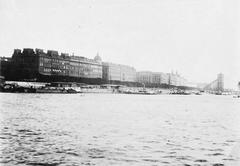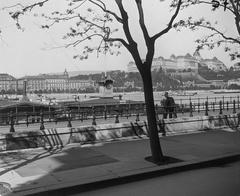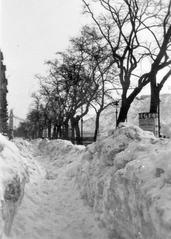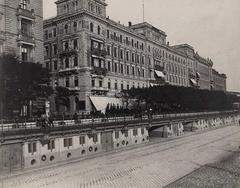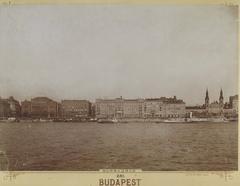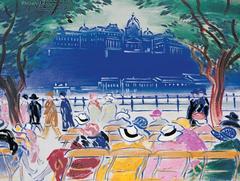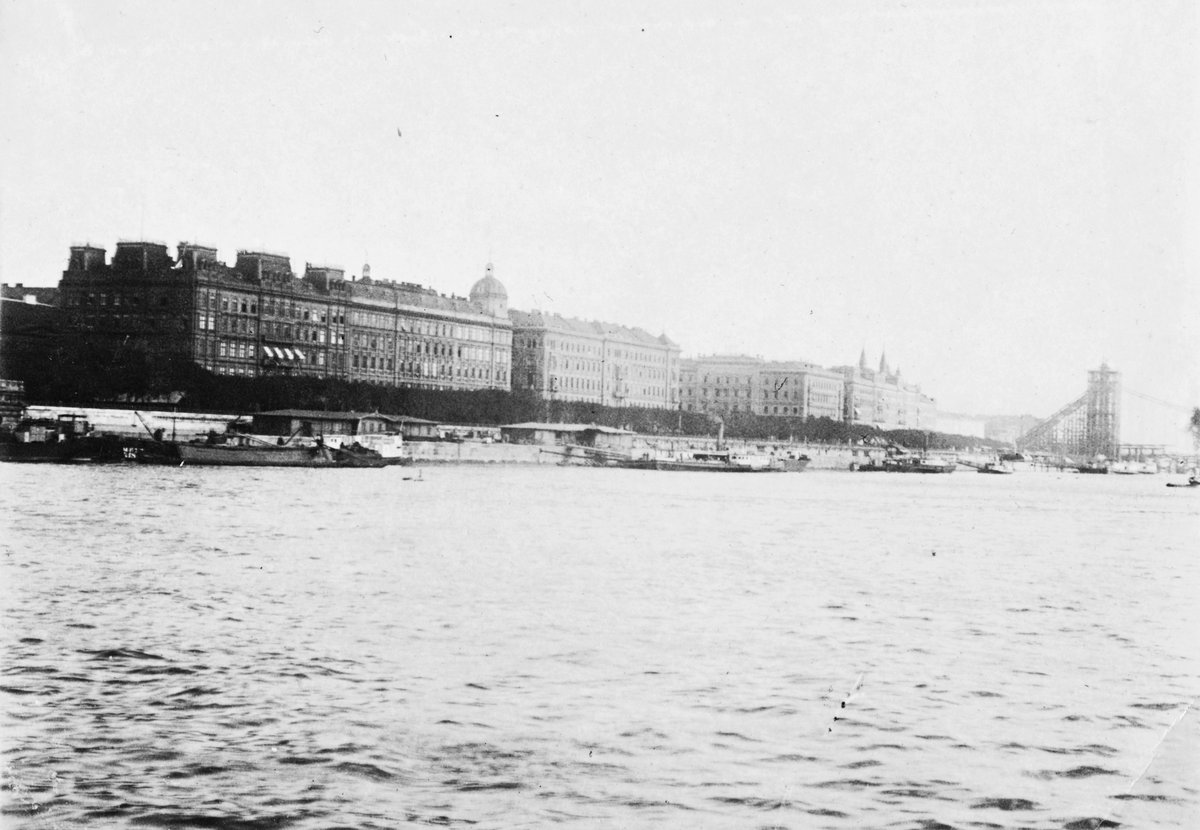
Danube Promenade Budapest: Visiting Hours, Tickets, and Travel Guide
Date: 14/06/2025
Introduction
The Danube Promenade (Duna Korzó) in Budapest is a celebrated riverside walkway that stretches along the Pest side of the Danube River, between the Széchenyi Chain Bridge and Elisabeth Bridge. This scenic corridor offers panoramic views of the Buda Castle District and the Hungarian Parliament Building, while also reflecting Hungary’s rich historical and cultural legacy. The promenade, shaped by centuries of urban evolution, grand architecture, and poignant memorials, stands as a testament to Budapest’s resilience and vibrant identity. Open 24/7 and free to access, it’s a favored destination for locals and tourists seeking natural beauty, architectural grandeur, and cultural immersion. This guide provides detailed information on visiting hours, ticketing for adjacent attractions, accessibility, must-see highlights, and practical tips to help you make the most of your visit. For further insights, consult landmarksarchitects.com, justbudapest.com, and the official UNESCO World Heritage listing.
Historical Evolution of the Danube Promenade
Medieval Origins and Early Growth
Originally marshland, the Pest embankment developed as a commercial and residential area from the 18th century, following the unification of Buda, Pest, and Óbuda into modern Budapest. While the main medieval settlements were on the Buda side, the Pest bank grew rapidly as the city urbanized (landmarksarchitects.com).
19th Century: Urbanization and Architectural Flourishing
The opening of the Széchenyi Chain Bridge in 1849 catalyzed the transformation of the riverbank into a fashionable boulevard, lined with grand hotels, cafés, and residential buildings. Notable landmarks such as the Vigadó Concert Hall (1865) and Gresham Palace (1906) showcase ornate architectural styles from this era (landmarksarchitects.com).
20th Century: War, Reconstruction, and Renewal
World War II caused significant destruction along the promenade, including the devastation of key bridges and monuments. Post-war reconstruction combined restoration of historic structures with contemporary design elements. The Liberty Statue on Gellért Hill, erected in 1947, is visible from the promenade and symbolizes freedom and resilience (landmarksarchitects.com).
Cultural and Political Significance
The Danube Promenade is a living stage for Hungary’s national identity. The Hungarian Parliament Building, completed in 1904, stands as a symbol of democracy and national pride. The Shoes on the Danube Bank memorial, installed in 2005, commemorates Jews executed during World War II—a site for reflection and remembrance. The promenade also hosts seasonal festivals, open-air concerts, and community gatherings, making it a vibrant center of local life (justbudapest.com).
Architectural Heritage and Urban Landscape
The promenade features a blend of architectural styles, from Neo-Gothic to Art Nouveau and modernist. Key landmarks include:
- Gresham Palace: An Art Nouveau masterpiece, now a luxury hotel.
- Vigadó Concert Hall: A neo-Renaissance landmark hosting cultural events.
- InterContinental Hotel: Modernist riverside architecture. Across the river, the promenade offers dramatic vistas of the Buda Castle District, Fisherman’s Bastion, and Matthias Church.
UNESCO World Heritage Status
The Danube Promenade, together with the Buda Castle Quarter and Andrássy Avenue, was inscribed as a UNESCO World Heritage Site in 1987, recognizing its universal value as a symbol of Budapest’s historical and cultural significance (unesco.org).
Visiting the Danube Promenade
Visiting Hours and Ticket Information
- Promenade Access: Open 24/7, year-round. No entrance fees or tickets required (budapest.com).
- Landmark Tickets: Some nearby sites, such as the Hungarian Parliament Building and Vigadó Concert Hall, require tickets and have specific opening hours. Advance booking is recommended for popular guided tours.
- River Cruises: Tickets start from around 3,000 HUF (~€8) for sightseeing cruises, with options for dinner and live music (holidify.com).
Accessibility
The promenade is wheelchair-accessible, featuring smooth, wide paths and ramps. Public transportation options, including tram line 2 and nearby metro stations (Deák Ferenc tér and Vörösmarty tér), ensure easy access. Parking is limited; public transit or walking is recommended (traveldudes.com).
Guided Tours and Events
Several operators offer guided walking tours focusing on the promenade’s history, architecture, and memorials. The area hosts annual events like the Danube Carnival in June, open-air concerts, and artisan markets (headout.com).
Dining, Rest Areas, and Facilities
The promenade features historic cafés, modern restaurants, and riverside terraces serving Hungarian and international cuisine. Public restrooms are available near major squares and metro stations, and the area is equipped with benches and shaded green spaces (budapestdanube.com).
Key Attractions and Photo Spots
- Hungarian Parliament Building: Neo-Gothic icon, guided tours available, best viewed from the Buda side.
- Széchenyi Chain Bridge: Budapest’s first permanent bridge, stunningly illuminated at night.
- Shoes on the Danube Bank: Holocaust memorial, a site for reflection.
- Little Princess Statue: Playful bronze sculpture, popular for photos.
- Vigadó Concert Hall: Architectural gem, hosts concerts and events.
- Gresham Palace: Art Nouveau architecture, now Four Seasons Hotel.
- River Cruises: Depart from docks along the promenade.
- Buda Castle District: Offers panoramic views from across the river.
- Bálna Budapest: Modern glass-and-steel cultural center further south.
- Margaret Island: Green retreat in the Danube, accessible by tram.
For photography, capture sunset views at the Chain Bridge, the illuminated Parliament, and the Shoes on the Danube Bank.
Practical Tips for Visitors
- Weather: June is warm (average highs 25°C/77°F) and ideal for festivals and riverside walks.
- Dress: Comfortable shoes recommended; casual attire is appropriate.
- Language: Hungarian is official; English is widely spoken in tourist areas.
- Currency: Hungarian Forint (HUF); credit cards widely accepted.
- Transport: Tram line 2 is scenic; single tickets cost ~350 HUF.
- Safety: Area is safe with regular patrols; follow standard precautions.
Etiquette and Local Customs
- Respect Memorials: The Shoes on the Danube Bank is a solemn site—be discreet and respectful.
- Tipping: 10–15% in restaurants and cafés.
- Public Conduct: Politeness is appreciated, especially at cultural and memorial sites.
Frequently Asked Questions (FAQ)
Q: Is the Danube Promenade free to visit?
A: Yes, it is open 24/7 with no entrance fee. Some nearby attractions require tickets.
Q: What’s the best time to visit?
A: Late afternoon and evening for illuminated views; early morning for tranquility.
Q: Is the area wheelchair accessible?
A: Yes, with smooth paths, ramps, and accessible public transport.
Q: Are public restrooms available?
A: Yes, near major squares and metro stations; some cafés provide access for a small fee.
Q: How safe is the promenade?
A: Generally very safe, with regular police presence; remain aware of belongings in crowds.
Summary and Visitor Recommendations
The Danube Promenade is a highlight of Budapest, seamlessly blending historical depth, architectural beauty, and vibrant cultural life. As a freely accessible public walkway, it offers visitors 24/7 access to some of the city’s most iconic sights, including the Parliament, Chain Bridge, Shoes on the Danube Bank, and Gresham Palace. The promenade’s role as both a living memorial and a social hub enriches the visitor experience, whether you’re enjoying a peaceful stroll, joining a festival, or reflecting at a site of remembrance. To maximize your visit, check opening hours for specific landmarks, use accessible public transport, and consider guided tours for deeper insights. For the latest updates, download the Audiala app and follow related posts and social media channels devoted to Budapest’s cultural highlights.
Start your journey along the Danube Promenade to immerse yourself in the heart of Hungary’s capital and its enduring charm.
